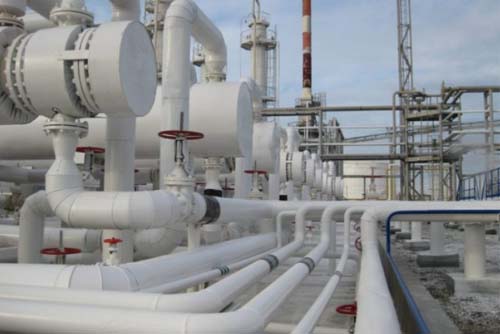Source: tankfarmnigeria.com
The oil and gas industry relies heavily on pipeline systems for most of its operations right from refining processes to distribution. It is for this reason that pipeline infrastructure and reliable control systems are of critical importance in the sector. Any failures or lapses in such systems could result in major losses, hazardous spills, and even environmental catastrophes.
Industrial valves are fundamental components in the safe management of oil and gas pipelines. They are tasked with flow control, maintaining the integrity of supply lines, among other significant roles. For a more in-depth understanding of their roles and applications, here is a detailed guide on different industrial valves recommended for the oil and gas industry.
Table of Contents
Different Types of Industrial Valves
On a base level, industrial valves are used as a means to either open, restrict, control, or throttle the flow of fluids. However, for all these aspects of fluid flow to be possible, unique valve design provisions are required. For this reason, industrial valves can be differentiated into categories as follows:
Valves by Disc Type
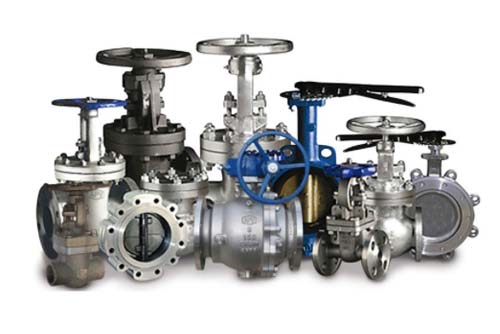
Source: fastcdn.pro/filegallery/gulfltco.com
In this context, a disc refers to the valve structure used to manage fluid flow. That said, the use of a variety of disc types in industrial valves is an important design feature because:
- Different discs deliver different methods of sealing that work for various media.
- They provide valve options for small and large pipelines.
- Different discs are set up to work as a solution for specific pipeline conditions. With this in mind, let us explore the types of discs used in industrial valves.
A ball- a valve that uses a ball to shut off fluid flow is known as a ball valve. Examples include a one-piece floating ball valve or a trunnion ball valve. The ball is usually hollowed out in the middle, either fully or partially, and controlled using an actuator connected to a pivoting stem.
A gate- as the name suggests, this type of disc is a flat sheet of metal that is raised and lowered to allow or shut off fluid flow. It is supported on the sides by seating and joined to a stem at the top.
A flat disc– flat discs are quite similar to the gate, except they are often circular and rotate horizontally as opposed to vertically. In certain types of industrial valves, like a check valve, they work independently based on pipeline conditions without the need for an actuator.
A plug – a plug disc type moves vertically to achieve fluid control. This type of movement into a cavity designed specifically to fit this type of disc is akin to plugging a hole hence its name. It is usually mounted onto a stem.
A needle- this would best be described as a narrower version of a plug disc. It is preferable where pipeline space is limited and pressure conditions are not so high.
A diaphragm- a diaphragm is akin to a plunger. It moves along the horizontal axis and, unlike other discs mentioned here above, is usually made of a polymer material.
Valves by Body Materials
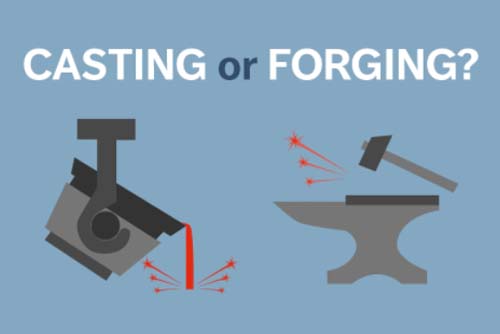
Source: alloyproducts.com
The type of material used to make an industrial valve determines how it can be applied. This is because each material is bound to be compatible with particular media more than others.
Some body materials used in valve making include:
Stainless Steel– stainless steel is a non-reactive metal. It is made of several metals, such as chromium, nickel, and molybdenum, melded in specific ratios depending on the gauge of stainless steel that is required. An example of a stainless steel valve is the CF8M ball valve which is ideal for managing the flow of corrosive media such as saline marine water, acids, and halide gases. It is neither corroded nor depreciated by them
Cast steel- a cast steel valve is made by pouring molten steel into a mold and allowing it to solidify within set conditions. On the one hand, if this process is done right, it yields solid valves and makes for a convenient low-cost method of production. However, it requires close monitoring and quality inspection as it is prone to holes and tears where the molten steel may not have solidified evenly. Additionally, if the quality of the molten steel was below par, the valve will equally be unreliable.
Forged steel – forged steel valves are manufactured by using intense heat and mechanical tools to shape metal. In essence, steel is bent and formed into the shape of the valve using tools as opposed to being poured into a ready-made mold. The upside of this is that the exposure to heat tends to strengthen the metal and thus it yields stronger and more durable valves. On the flip side, given as it is formed as a whole, the connections between different parts could be a source of leaks. The extra works involved are also time-consuming and make forged steel valves expensive.
Valves by Conditions
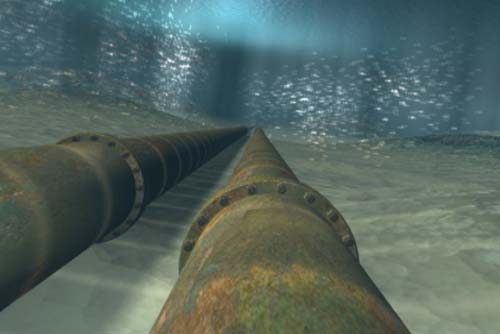
Source: octgpipes.com
The conditions within a pipeline dictate the type of valve that can be used in it. Both the material of the valve and that of its disc need to be able to withstand the conditions in the pipeline without high wear and tear and without compromising the standards of operation. When choosing a valve consider conditions such as:
Temperature- the oil and gas industry, in particular, is very temperature-sensitive because petroleum products are flammable. To this end, valves used in petrochemical pipelines need to be able to withstand and maintain temperatures within conducive levels. The valve design also needs to take into consideration that metals expand when heated and contract when cooled. Such temperature fluctuations should be mitigated to ensure the working of the valve remains optimal through them.
Pressure – high-pressure levels in a pipeline can overwhelm a valve that is not resilient enough for such conditions. A needle valve, for example, may not manage the force of high fluid pressure without being pushed open. As such, if the pipeline pressure is high, a steady valve that can handle such force is required. A full welded ball valve, for instance, is mounted on a trunnion and can take on high pressure while maintaining optimal performance and low torque.
Pressure relief- overly high-pressure levels could result in pipeline bursts or cause even the most resilient valves to malfunction. Due to this, it may be necessary to install a pressure relief valve in an oil pipeline. A check valve may be a good choice for this type of condition as it is pressure sensitive. It can either open to release pent up air pressure or allow the flow of media down the pipeline to relieve fluid pressure. A throttling valve such as a diaphragm valve could equally be useful as it could be used to lower fluid pressure where needed.
Corrosive substances– crude oil is an amalgamation of different fuels that are eventually separated during the refinery process. Some of the components can be highly corrosive and require valve materials that are durable and non-reactive. Stainless steel valves or valves made of enhanced steel alloys are ideal for this type of pipeline conditions.
Valves by Structure
Valve structures vary based on the disc type and how they are operated. A disc type that operates horizontally, for instance, would require different design provisions from one that operates vertically. Below are some common valves used in the petrochemical industry and their structures.
A Ball Valve
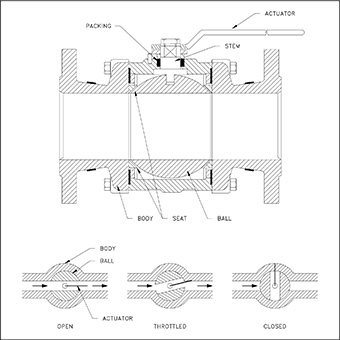
A ball valve consists of an actuator lever, a stem, and a spherical ball. All three parts are connected and move as a unit. When the actuator is rotated, the stem rotates too and subsequently turns the ball. If the hollow part, known as a bore, is parallel to the pipeline, then the valve is open and media can flow through it. In contrast, if the bore is perpendicular to the pipeline, the valve is shut.
The ball in a ball valve is cushioned by spring seats which provide a full-proof seal against leakage. The stem is also lined with packing to prevent leakages towards the top when the valve closes or pipeline pressure rises and fluid levels rise.
A Gate Valve
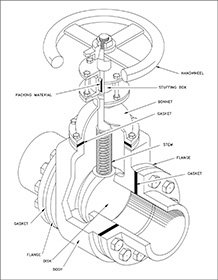
A gate valve comprises a gate, a pivoting stem, and an actuator. The stem of this type of valve is usually threaded such that when the actuator is rotated, the stem rises or goes down. As the threaded stem rises, the gate goes up and the valve opens. Similarly, when the stem rotates downwards, the valve closes.
A Butterfly Valve
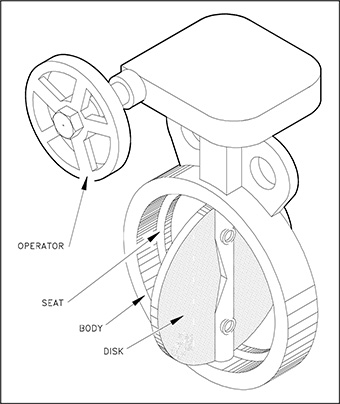
The ‘butterfly’ reference in the name of this valve refers to the positioning and working of its disk. On the outermost part, a butterfly valve has an actuator lever that is connected to a stem. The stem goes down through the flat disk of this valve and mounts at the base of the valve. As a result, the flat disk in this valve can only move sideways to open or close the valve like the wings of a butterfly. Due to the stem transversing through the disc, it remains rooted in the middle.
A Check Valve
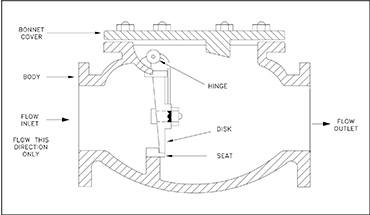
A check valve is unique in that it does not require an actuator or a stem. Given as its flat disc opens and closes based on pressure conditions, it is mounted on a hinge. This hinge mechanism holds the flat disc in place but at the same provides flexibility for the valve to open and shut as needed.
Globe Plug Valve
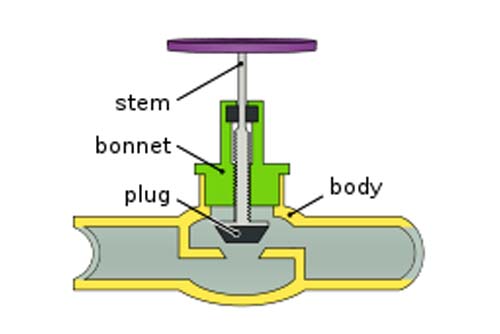
Source: Wikipedia
A globe valve operates by moving in a vertical axis. To this end, it has an actuator joined to a threaded stem which when rotated pulls the plug up or pushes it down. Unlike the gate valve, a globe plug valve is compact and streamlined, therefore, it is suitable for throttling applications.
Industrial Valves Commonly Used in the Oil and Gas Industry
The operations of the oil and gas industry entail a host of functions that require different kinds of fluid flow control. In light of this, different valves can be applied in different stages of production or distribution depending on the desired outcome. Let us explore some of the common valve options that are used by oil and gas manufacturers as well as their pros and cons.
Ball Valve
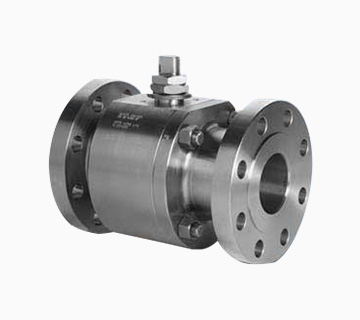
A ball valve is a rotary valve that is dependable in pipelines that require fast shut-offs and tight sealing. Nevertheless, there are different types of ball valves and they each work best in different pipeline conditions. Subsequently, the conditions of the pipeline should first be considered before choosing a ball valve.
A floating ball valve is supported only by its stem and its seats. When the floating ball is rotated to close the valve, fluid pressure pushes it onto its seats and completely cuts off flow. However, when fluid pressure is very high, opening the valve is a high torque operation because a lot of force is required to push the ball against the force of fluid pressure. For this reason, a floating ball valve is recommended for low to medium pressure oil and gas pipelines.
On the other hand, the ball on a trunnion ball valve is mounted and does not rely on fluid pressure to hold it in place. The mounted ball can also open and close against the face of pressure at low torque. So, if you need a ball valve for high-pressure conditions, this would be your best bet.
Pros:
Ball valves offer quick shut-offs
The ball and seats deliver impervious sealing
They are easy to repair
Ball valves can be designed in both relatively large and small sizes
Cons:
High pressure causes an increase in pressure between the ball and the seats which results in wear and tear
Gate Valve
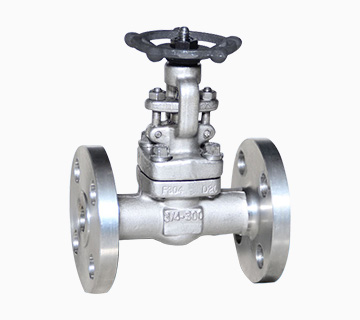
A gate valve works by allowing the unrestricted flow of media and does not alter the flow rate of oil or gas in any way. These features make it suitable for pipelines where flow needs to be controlled but the flow rate needs to be maintained.
Further, when open, the disc of a gate valve leaves the channel of the pipeline unobstructed making it possible to transmit slurry fluids like crude oil.
Pros:
- A gate valve can handle flow control of highly viscous fluids, unlike other narrower valves.
- It can be controlled using an automated actuator to ease operations.
Cons:
- The threaded stem of a gate valve suffers high friction and could depreciate fast.
- Unlike other linear valves, a gate valve is a poor candidate for throttling as it yields dismal results.
- The shut-offs on this valve type are not instantaneous which limits them to low-use applications or pipeline parts that do not present dire urgency.
Butterfly Valve
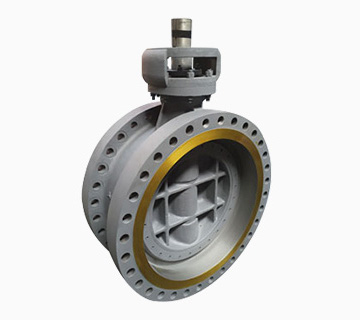
A butterfly valve makes up for most of the areas where a gate valve falls short. When it is open, the channel is wide enough for the media to flow through even if it has solid particles suspended In it. Moreover, it is applicable in high-pressure pipelines because the disc of a butterfly valve is held in place by a stem mounted at the valve base. These design features also ensure that this type of valve will remain tightly shut or firmly open as required and that it operates at low torque.
Pros:
A butterfly valve can be shut off and opened fast which enhances accuracy in pipeline operations.
It provides a tight seal and reliable management of fluid flow even in high pressure and high temperatures.
It is a reliable low-maintenance valve.
Its compact design is versatile and can be adapted for both small and large scale pipeline systems.
Cons:
- During fluid flow, the entire surface area of the disc is exposed to the fluid which exacerbates its exposure to corrosion or wear and tear.
- Impurities or debris can accumulate in the seats when the valve is open.
Globe Valve
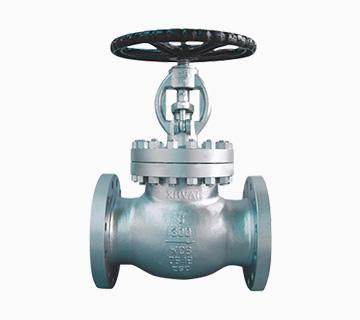
A globe valve is fitted with a plug-like piston as a shut off device. It is a linear valve that moves up and down to open and shut off flow, when the actuator is turned. Given as the stem is threaded, this valve can be opened to different levels. Therein lies one of the reasons why this type of valve is popular in the petrochemical industry. The size of the opening can be limited as needed for throttling.
The bottom of the valve where the piston meets the base is curved and serves to lower pressure. As fluid rushes through the elevated cavity, it loses momentum. Therefore, a globe valve would work well in a pipeline system where pressure needs to be managed.
Pros:
A streamlined plug and packed stem area delivers adequate sealing
It is possible to use an automated actuator with this type of valve which makes it easier to operate.
Unlike most valves, it offers both fluid flow control and throttling functions.
Cons:
Threaded stems experience lots of friction during opening and closing which could lead to delayed valve response time unless the actuator is automated.
High friction could result in a higher rate of wear and tear which intrinsic could raise the maintenance costs of a globe valve.
If the gland packing along the vertical axis on which the valve stem moves is not done right, it is likely that leaks will become a challenge over time.
Check Valve
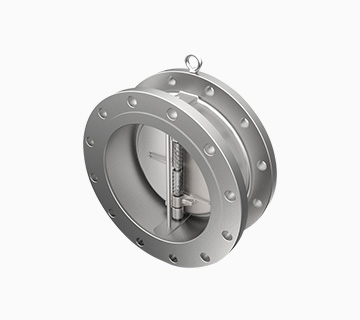
A check valve is a pressure-sensitive valve. It opens when pressure from the inlet side is higher than the pressure on the outlet side. It does not, however, allow backflow of media. In other words, a check valve is a unidirectional valve that prevents the backflow of media.
In an oil and gas plant, this would be useful in the refinery stage where separated petroleum products are channeled into individual pipelines to maintain their integrity. It could also be useful in distribution pipelines where flow should be directed forward at all times.
Pros:
No actuator is required as this type of valve is automatic.
Restriction of fluid backflow ensures that cross-contamination of product lines or batches is avoided.
Cons:
The installation of this valve has to be very precise or else it will not be able to respond to fluid pressure which would defeat the purpose of the valve.
A check valve takes away an element of hands-on pipeline control because there is no actuator manipulation involved.
Repairs can be quite tasking.
Plug Valve
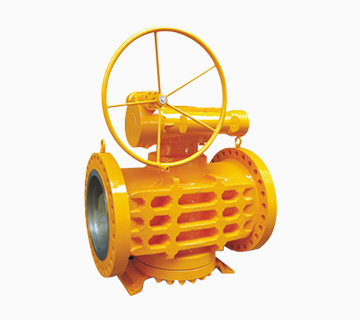
A plug valve is also a linear valve but it has a wider piston than a globe valve. While it may not be ideal for throttling, it can hold its own in high pressure or a high-temperature pipeline. The wider surface area of the plug provides enough room for the pressure to be distributed and dissipated along the plug while maintaining fluid flow control.
The plug is controlled using an actuator which can either be manual or automated. When it is pulled up, enough room is left for viscous petroleum products to flow through unobstructed. A plug valve can thus be recommended for unrefined oil products, managing semi-solid petroleum product inputs such as those involved in biogas production.
Pros:
Among linear valves, it is one of the most reliable shut-off alternatives.
It has a shorter threaded stem which could help mitigate wear and tear as well speed reduction.
It is applicable for different fluid densities.
Cons:
This valve would not be ideal for throttling which may be necessary for a high-flow high-volume pipeline.
When applied in large operations, a large plug may be difficult to operate without an automated actuator.
What is WOG For Valves?
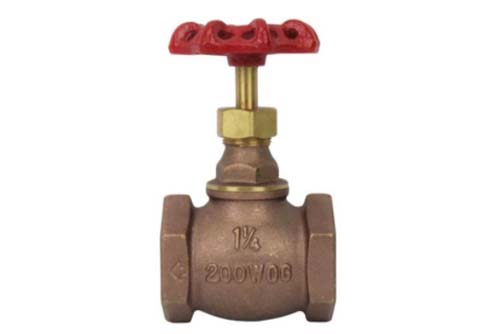
Source: qrfs.com
Oil and gas products are highly sensitive due to their volatility and flammability. It is, therefore, no wonder that the industry is governed by standardized valve ratings and classifications.
WOG is usually labeled on a valve to indicate the pressure rating it should operate at within ambient temperature. A WOG rated valve is also, by default, qualified for use in the management of Water, Oil, and Gas pipelines. From a more technical perspective, the oil and gas components are also defined within specific parameters.
Oil – a lubricating liquid that flows freely but is more viscous than water.
Gas – a liquid in a vaporized state but not inclusive of combustible gases.
What Are API Standards?

Source: Pexels
The petroleum sector serves an international market that involves countries importing and exporting oil between each other. Harmonized industry regulations thus become necessary for maintaining order and product integrity in the sector.
API standards are named after the American Petroleum Institute. They are stipulations that guide the production of valves and all other equipment that is used in the oil and gas industry. Most countries adhere to them and this has helped to:
Improve safety in the industry
Ease business operations between traders
Maintain high quality of oil and gas products around the world.
Conclusion
It would not be a stretch to say that industrial valves are the unsung heroes of the petroleum industry. They are simply indispensable if we have any hope of petroleum products getting to us as consumers. They are also vital in terms of safety and supporting oil product quality. It will, nevertheless, be interesting to watch how industrial valve manufacturers will innovate going forward and how technology may further be incorporated in valves.

